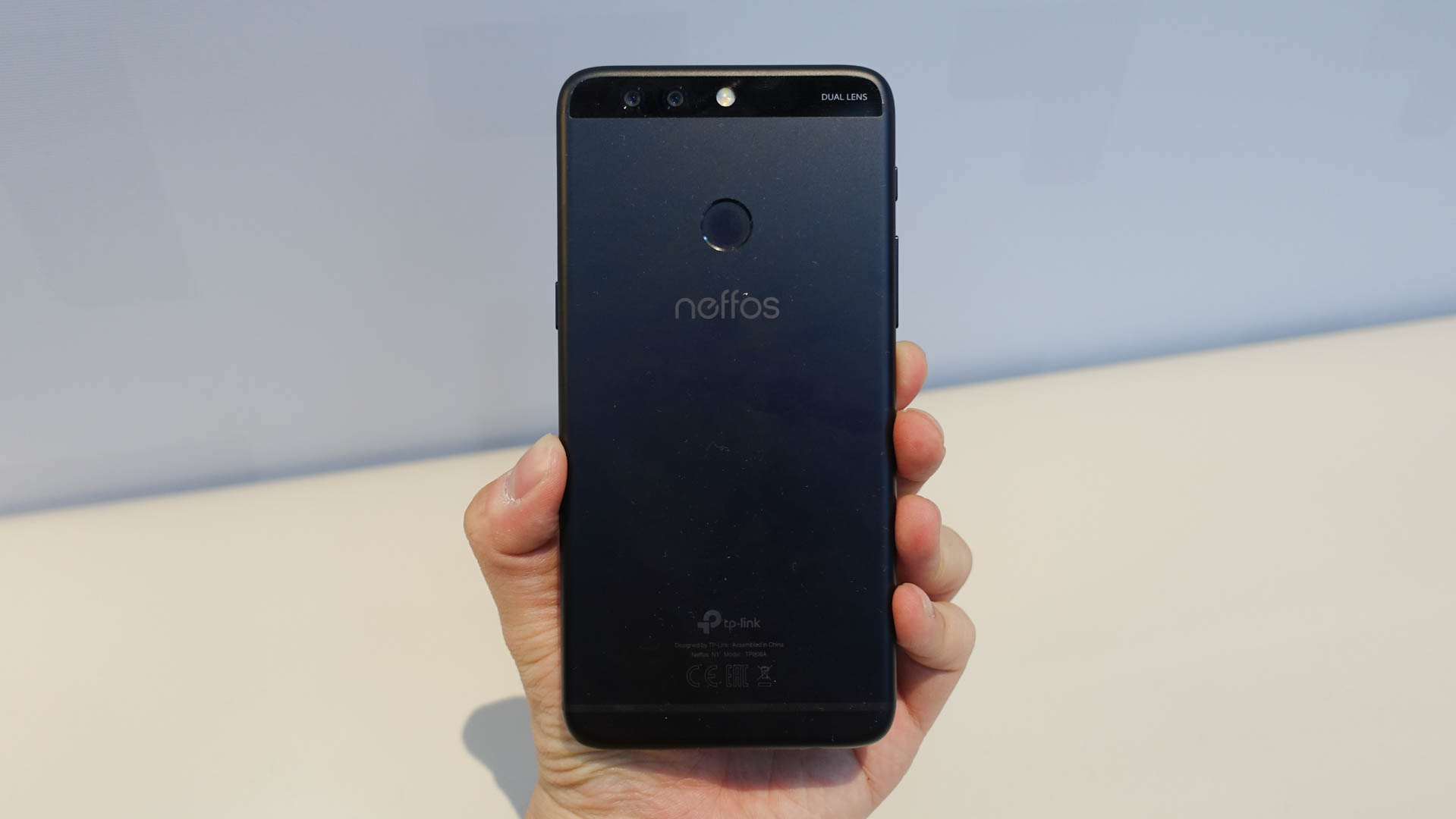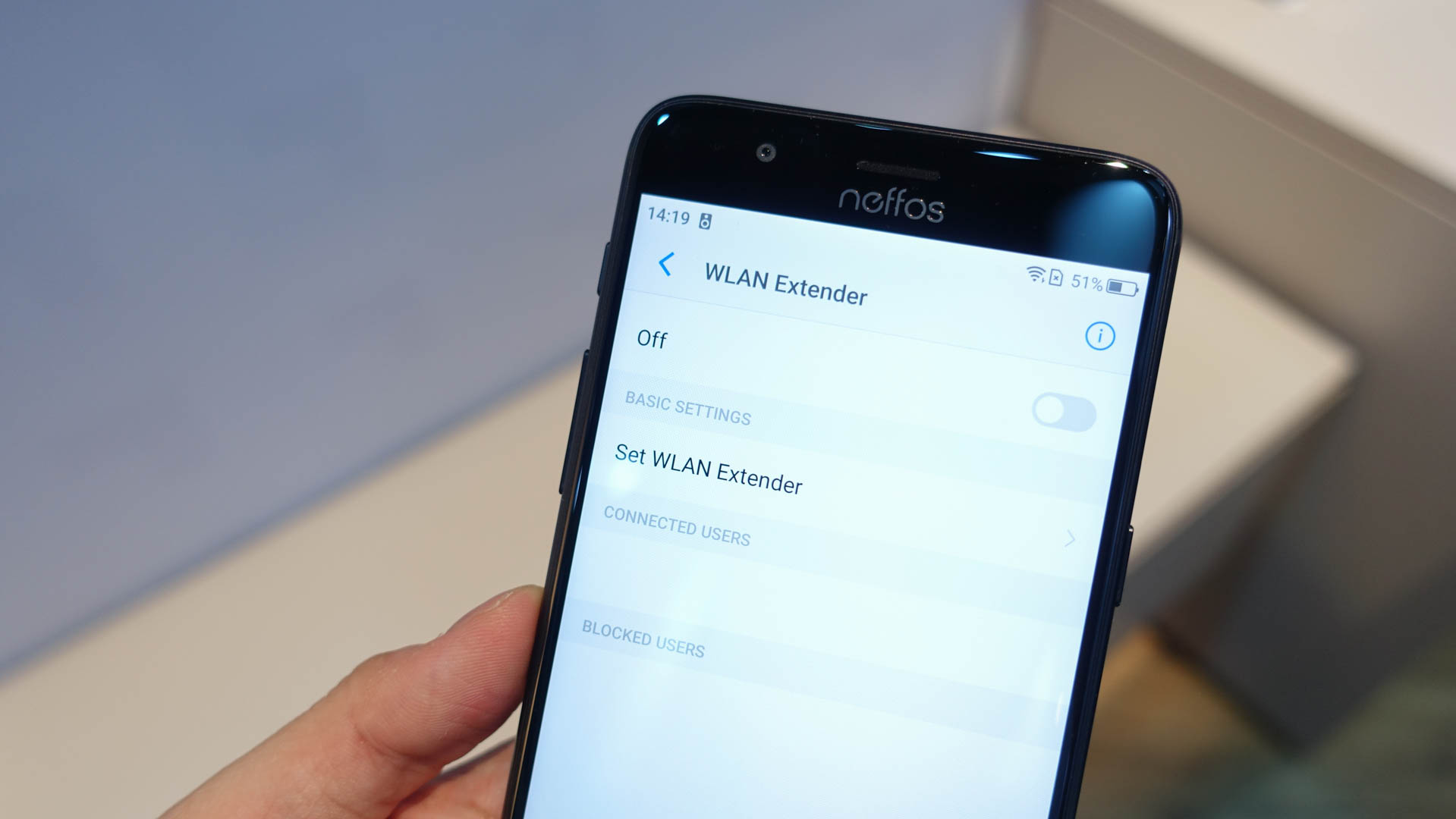Imagine if you happen to be at a place with weak WiFi and cellular reception, you would simply wish your gadgets could have a stronger antenna to be able to get you online despite of that challenge, this is where the Neffos N1 comes into the picture, the latest smartphone from TP-Link that comes with a WiFi extender feature and an all new but familiar design, it was being shown to me during my visit to the company’s booth at Mobile World Congress.
 While I’ve seen lots of phones embracing the iPhone X’s notch and vertical camera bump on the show floor, the Neffos N1 takes on a more traditional approach. The phone resembles the Huawei P10’s design a lot, and Neffos is bold enough to claim that the phone’s dual 12-megapixel main camera, which comprises of a RGB and monochrome lens with a f/2.0 aperture, is on par with the P10, though it lacks the LEICA branding and software. However, the Neffos N1’s design can be easily a favorite for people looking for an affordable handset, I like the smooth metal unibody profile and it feels just as good to grip as the more expensive Huawei P10.
While I’ve seen lots of phones embracing the iPhone X’s notch and vertical camera bump on the show floor, the Neffos N1 takes on a more traditional approach. The phone resembles the Huawei P10’s design a lot, and Neffos is bold enough to claim that the phone’s dual 12-megapixel main camera, which comprises of a RGB and monochrome lens with a f/2.0 aperture, is on par with the P10, though it lacks the LEICA branding and software. However, the Neffos N1’s design can be easily a favorite for people looking for an affordable handset, I like the smooth metal unibody profile and it feels just as good to grip as the more expensive Huawei P10.
The specs of the Neffos N1 is neither underwhelming nor exciting, but at the very least it uses the MediaTek Helio P25 system on chip, which offers decent mid range performance that rivals against the Snapdragon 625, there’s also 4GB of RAM and 64GB of storage, which should appeal to the average smartphone user. The Neffos N1 maintains a typical 16:9 display measuring at 5.5-inches, it displays good colour and contrast, brightness is also decent enough for outdoor use.
 With a wireless extender feature, TP-Link obviously hopes that this would be a unique selling point of the phone when it gets released to the market, as in to show the company’s expertise in wireless technology, there’s no special hardware that is required by the feature. Setting up the feature is obviously much simpler than going into a router’s configuration page, as you can easily access it through the phone’s settings page, set up your SSID, password and wireless band to broadcast, and you’re good to go. TP-Link has also shared with me a good use case for this feature too, to be used on public WiFi connections that only supports a single session per login such as hotels and airports, this is very useful when you have multiple devices that requires online connectivity.
With a wireless extender feature, TP-Link obviously hopes that this would be a unique selling point of the phone when it gets released to the market, as in to show the company’s expertise in wireless technology, there’s no special hardware that is required by the feature. Setting up the feature is obviously much simpler than going into a router’s configuration page, as you can easily access it through the phone’s settings page, set up your SSID, password and wireless band to broadcast, and you’re good to go. TP-Link has also shared with me a good use case for this feature too, to be used on public WiFi connections that only supports a single session per login such as hotels and airports, this is very useful when you have multiple devices that requires online connectivity.
[sciba leftsrc=”https://klgadgetguy.com/wp-content/uploads/2018/03/neffosn1-camerasample-rgb.jpg” leftlabel=”” rightsrc=”https://klgadgetguy.com/wp-content/uploads/2018/03/neffosn1-camerasample-monochrome.jpg” rightlabel=”” mode=”horizontal” width=””]
While I didn’t have high expectations for the phone’s camera, the Neffos N1 managed to surprise me in terms of image quality, though it is nowhere near to Huawei’s P10 cameras when it comes to contrast and detail, they are good enough to be not called crappy cameras from a typical Chinese smartphone, the camera software will also allow you to switch between its lenses, which you can capture photos in full nostalgic monochrome if you desire to do so.
In a nutshell, the Neffos N1 isn’t a groundbreaking smartphone if it were to compete with other companies in the show, but it’s nice to see TP-Link finally taking its smartphone business seriously with an intention to integrate its networking know-hows, we’ll soon have the opportunity to check out the device further and will report with a full review. TP-Link officials wasn’t able to confirm any release date or pricing for the Neffos N1 in Malaysia, but do expect the phone to be priced from the range of RM1000-RM1200.


